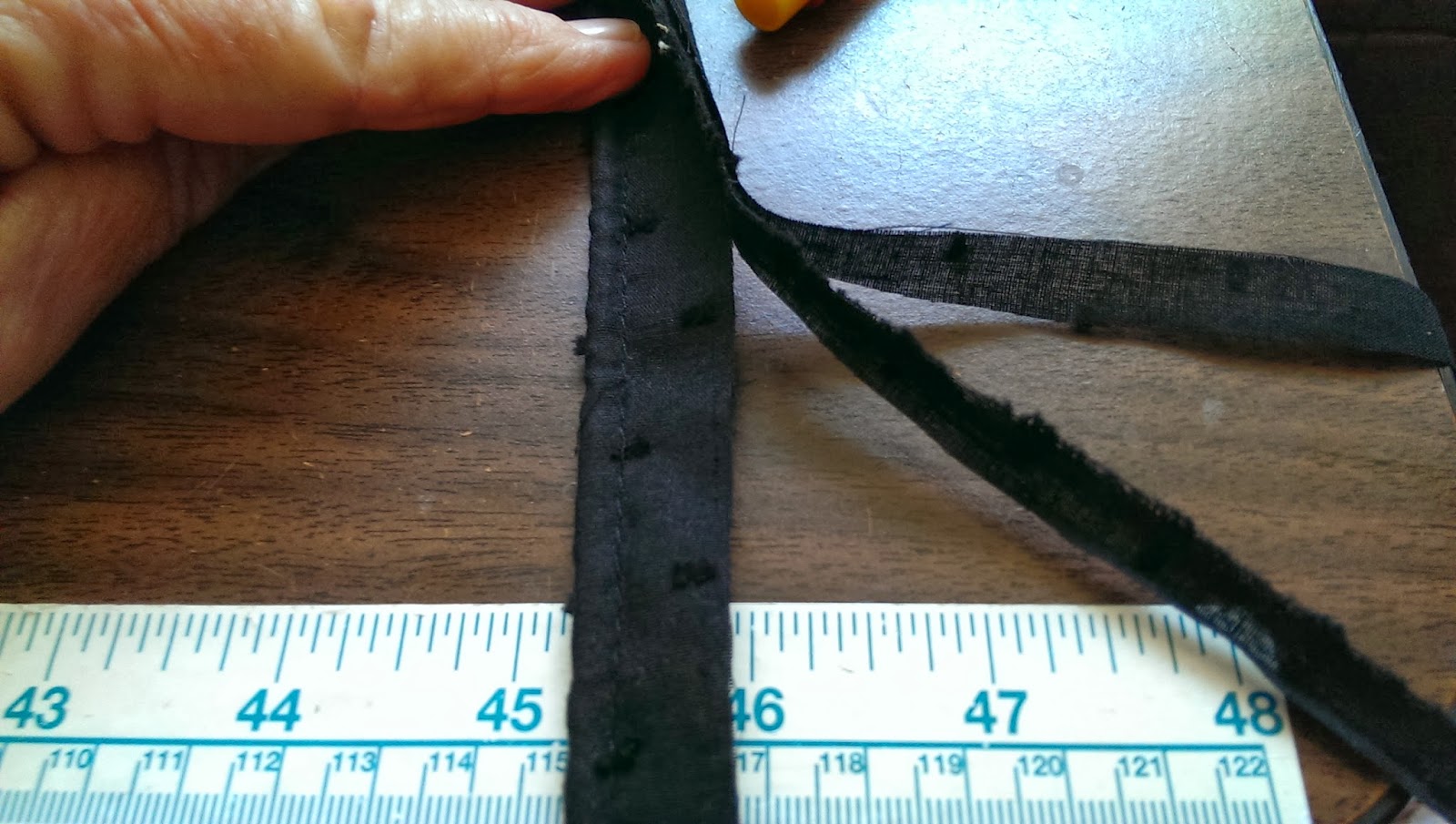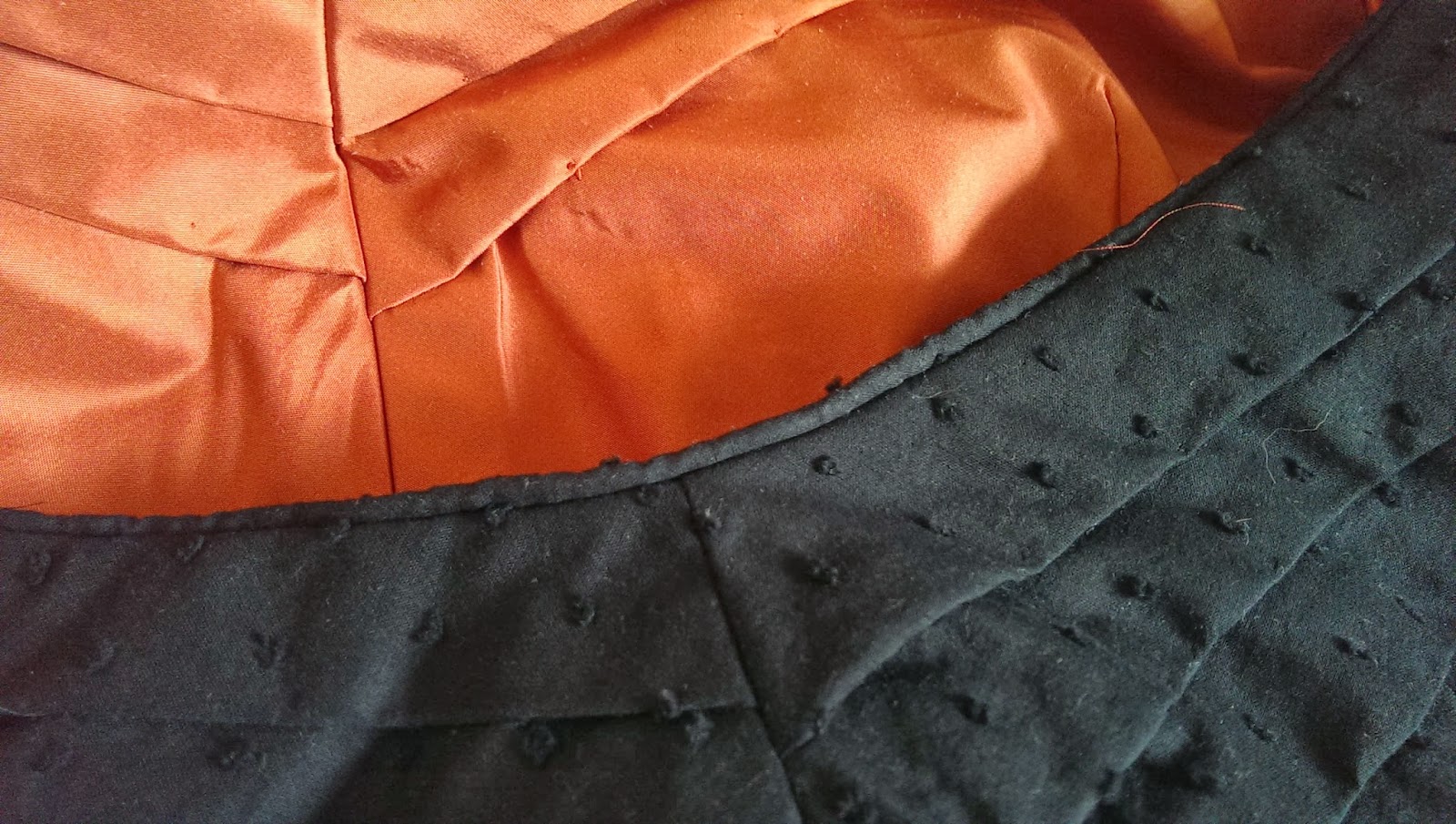I’ve been
fascinated by watch chains for the last couple years after I first started
noticing the watches women wore during the 1800s. Actually both men’s and women’s
were interesting. I even have two watch chains. This black one is a man’s. I’m
not sure yet of the gold one but it’s a pretty one. The black one was purchased
in the Port Townsend antique mall and could possibly be a mourning one. The
dealer thought it was made of braided hair but after I inspected it with a
magnifying glass, it turned out to be braided silk. And it’s in really good
condition. I think I bought the gold one
in an antique flea market somewhere. After looking at some of the photos I’ve
collected of women wearing watch chains I think this could easily pass for one.
Women’s
watches are hard to come by. I had a cheapie Victorian Trading Co. one I bought
in the gift shop at the Museum of the Confederacy in Richmond, VA, but after
using it a couple times the stem snapped off. So at this point I knew I had to
come up with a better option instead of a reproduction one.
I did my
usual search for watches and the majority of them, it they’re still working,
are way out of a “costumer’s budget”. I even carried a fake one that didn’t
open. While in London in an antique mall I stopped by one booth to get a little
education from the dealer on women’s watches. Of course the little tiny ones
that were beautifully decorated were a king’s ransom. But the majority of ones
I was seeing were larger about 1 1/2 to 2 inches wide and mostly were just
engraved.
I had some
small brooch type watches that I pinned to the bottom of my 1880s bodices and I
thought they were quite cunning. Except I found out they didn't start wearing them with these until the late 1890s, and were up near the shoulder. The gold watch is a modern repro, as is the
silver one. The gold brooch, another antique flea market purchase, is made for
hanging a watch or pendant from. The silver one was made to use as a chatelaine
that I bought at Lacis in San Francisco. Both hang about 3 inches altogether.
I was in the
middle of recreating my 1850s Bloomer dress and while I was at a Costume
Symposium back in Williamsburg, VA, I kept seeing portraits of ladies wearing
long watch chains with their watches. Not all of them are chains. Some were
beaded ribbons, or just strung beads. This was dated 1835. At this point I was
on a mission to find a watch and chain for myself, and I really wanted to make
a beaded one but my Bloomer dress was 1850s so I kept looking.
So that’s
the background for this post. This morning while chatting with Gina W. I
mentioned the long watch chains and how many photos I’d collected. She said I
needed to do a blog. So Gina; here it is.
I collected
all my photos together that shows watches. Most of them are actual photos and
paintings of ladies wearing them since fashion plates and catalogs didn’t show
them being worn.
The earliest
I have photos of are 1830s. These are all about mid ‘30s. The chains are all
long and tucked into a belt, although the first one of Rachael Jackson
(President Jackson’s wife) is clipped at the collar and just hanging above her
belt. It may well be a piece of jewelry too.
Or a long
set of beads as shown in this 1843-48 daguerreotype.
Then I started
finding some 1850s examples. This photo came from my research on the Bloomer
gown where the lady on the right is wearing the gown I copied before she had it
altered to a Bloomer. All three of them have their watches attached to ribbons
which are pinned to their lower bodice and tucked into a watch pocket at their
waistline. Watch pockets are still a mystery to me. I haven’t successfully
added one to any of my dresses yet.
Both of
these ladies have a long chain although the one on the right dated 1854, may
have a very ornate pendant or watch on hers.
In the 1860s
the watch chains and watches were shorter. A couple photos show them still tucked in
the belt if they had one, and some now hanging on the outside where the watch
showed.
This one of
Dr. Mary Walker, wearing her Bloomer gown in the 1860s, has a visible outside
watch pocket on the waistline of her bodice. I think this watch chain looks
similar to the gold one I have.
I couldn’t
find any in the photos I found of the 1870s but they popped up again in the
1880s with their bustle gowns. They’re still showing long chains but more watch
pockets are visible on the outside.
I found one
photo in the 1890s with these two young ladies wearing long chains. Another I
found looked like a watch but on closer inspection it was a lorgnette. I wonder
if that’s what all those long chains eventually became?
Since I’ve
been working on a couple 1830s dresses, and my inspiration photo of one of them
did have a watch on a long chain, I dug mine out and it’s the perfect accessory
to go with my gowns. My chain is 55 inches long. I bought the working watch
from a friend of mine and it’s the perfect size.
You know
what? You can’t buy chains this long anymore. Guess where I got mine? On a
cruise ship. In one of their kiosks they sell a variety of chains by the inch.
You tell them the length you want, pay for it, and later pick it up with the
connectors attached to them. I picked a rope chain and think I paid $24-$27 for
mine, so that’s about 4 cents an inch. Its 14k electroplated gold, and not a
bright shiny gold that looks cheap.
I know I’ve seen them in other places than a cruise ship but never paid
much attention to them.
***********************
ETA: For those of you interested in the 1830s-50s beaded watch chains, read more about them here: http://aylwen.blogspot.com/2011/03/making-1830s-beaded-watch-chain.html
Aylwen was at the same symposium that I was and took this class while I was in another.
To purchase the Piecework magazine online with the article on them, go here: http://www.interweavestore.com/piecework-may-june-2000-digital-edition
And if you want to make the bead loom for making one, here's some instructions: http://www.museum.state.il.us/ismdepts/anthro/beads/pdfs/Loombeadinglesson.pdf
***********************
ETA: For those of you interested in the 1830s-50s beaded watch chains, read more about them here: http://aylwen.blogspot.com/2011/03/making-1830s-beaded-watch-chain.html
Aylwen was at the same symposium that I was and took this class while I was in another.
To purchase the Piecework magazine online with the article on them, go here: http://www.interweavestore.com/piecework-may-june-2000-digital-edition
And if you want to make the bead loom for making one, here's some instructions: http://www.museum.state.il.us/ismdepts/anthro/beads/pdfs/Loombeadinglesson.pdf



















































